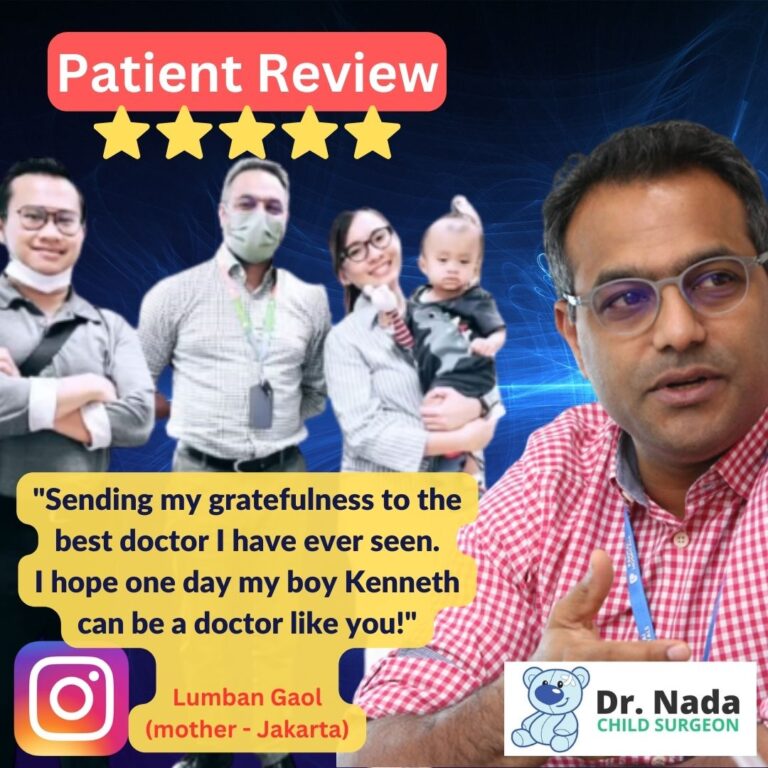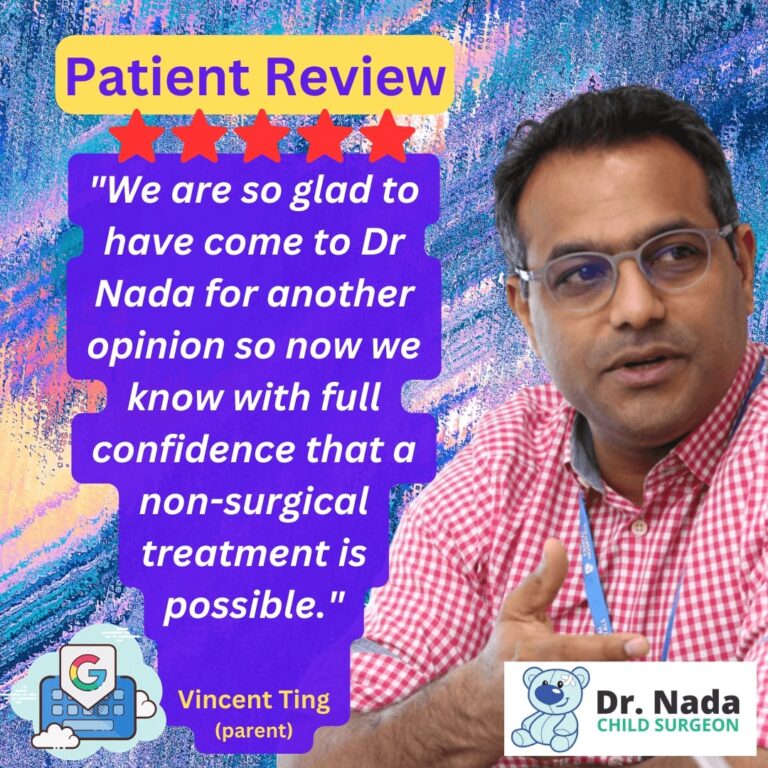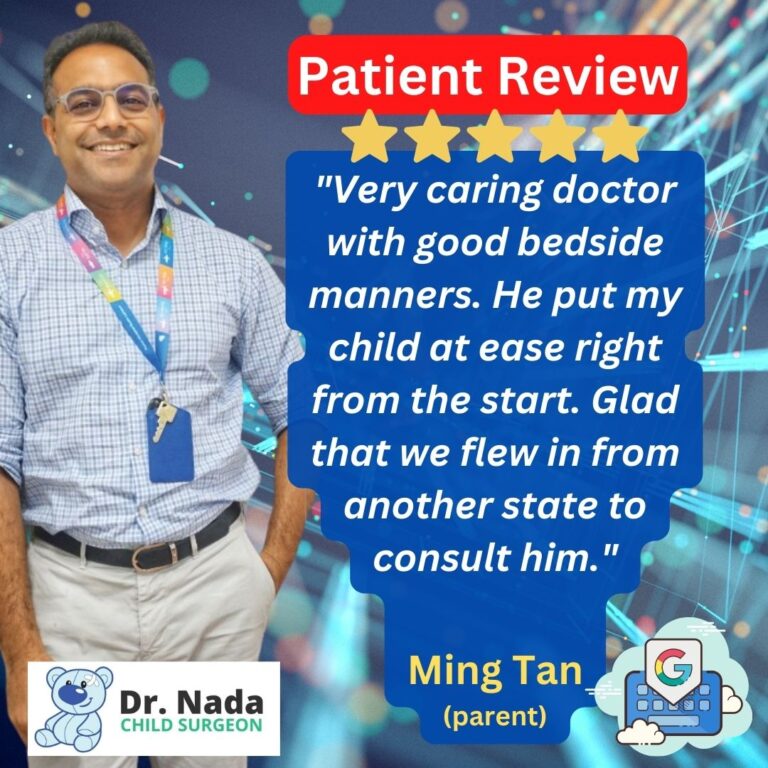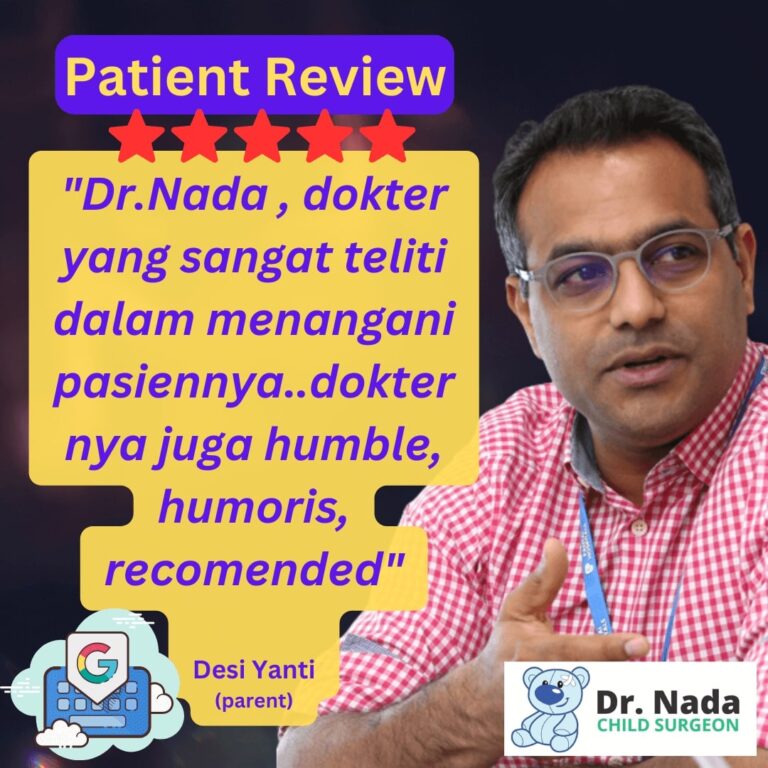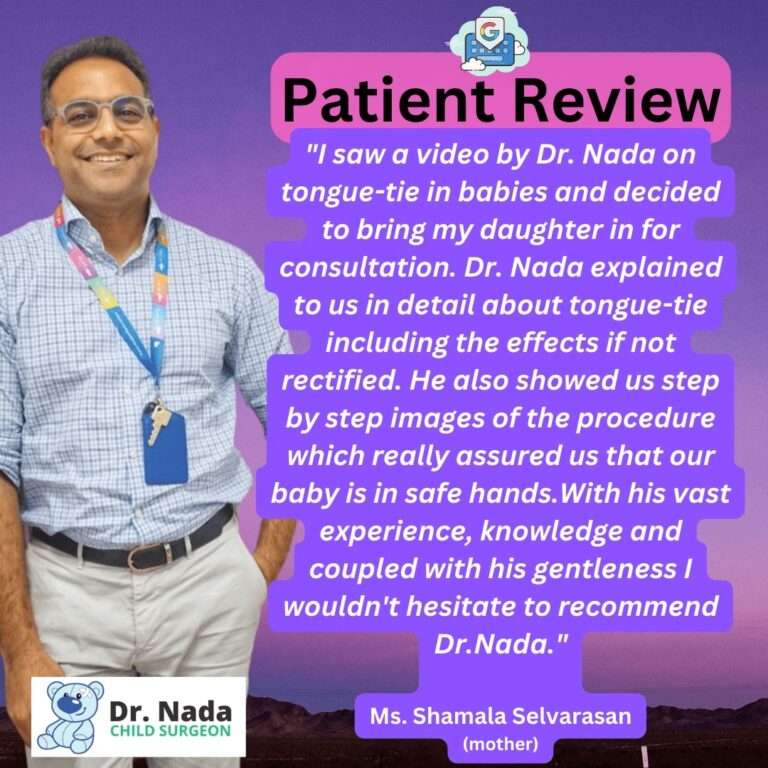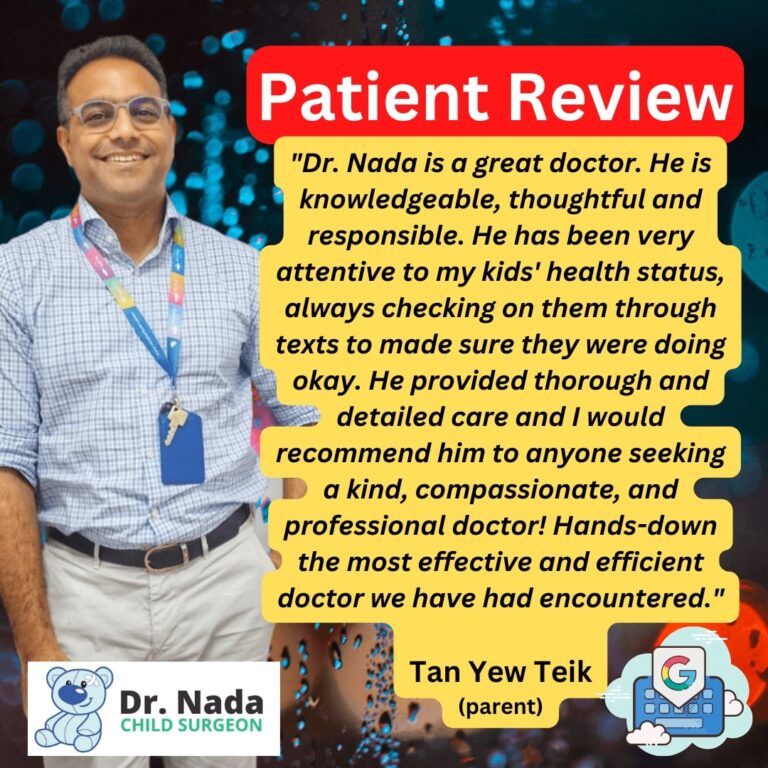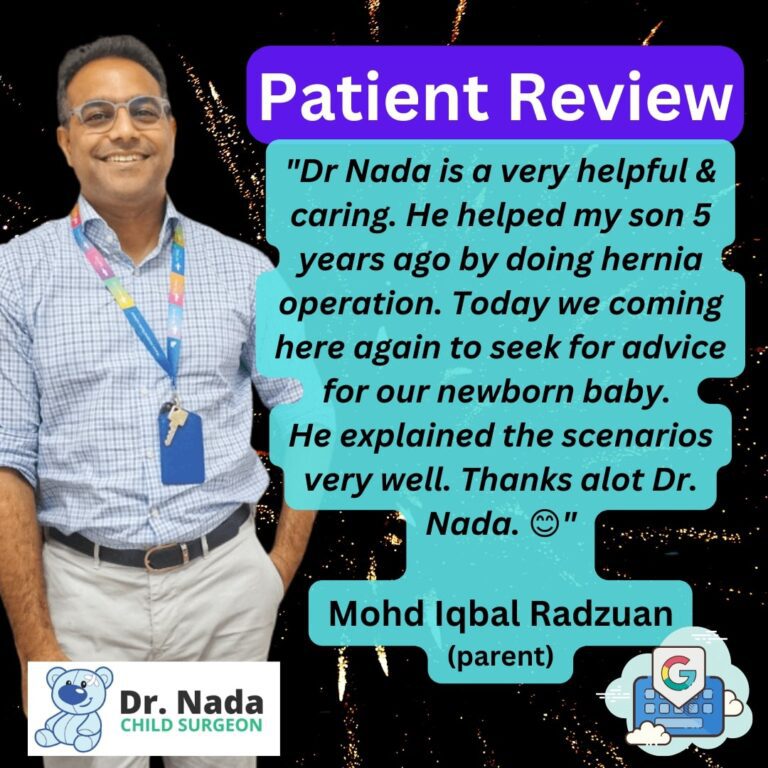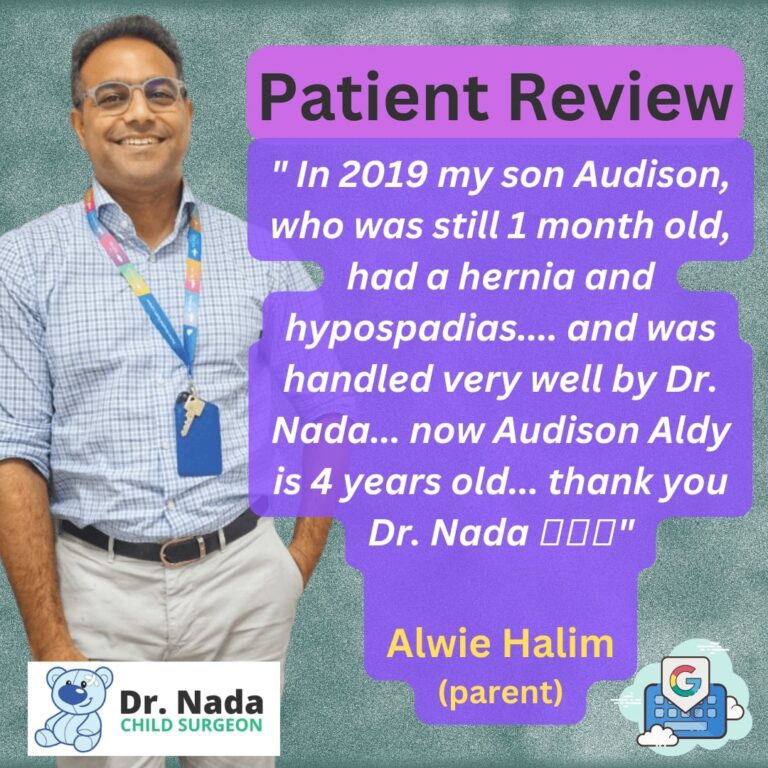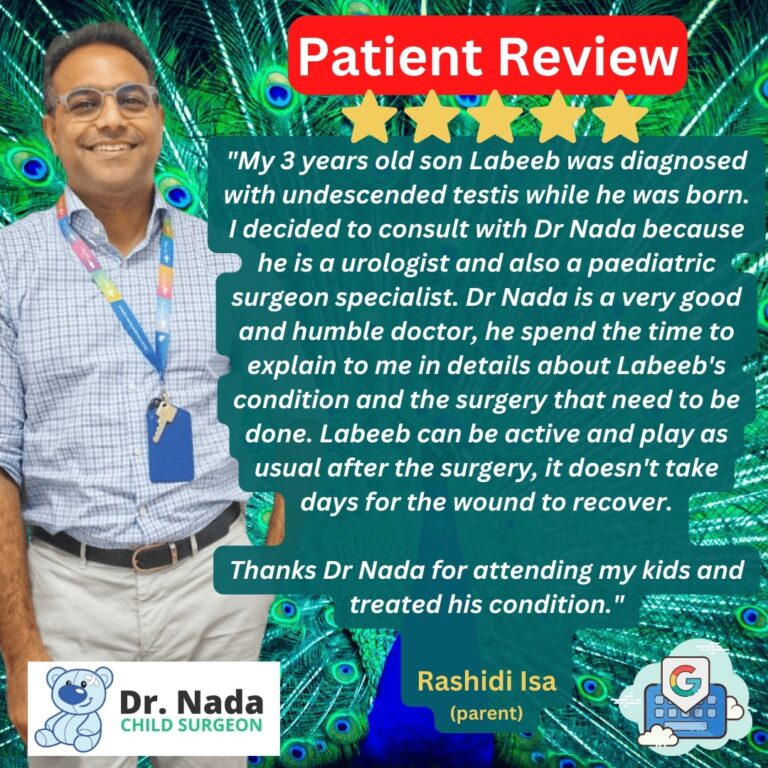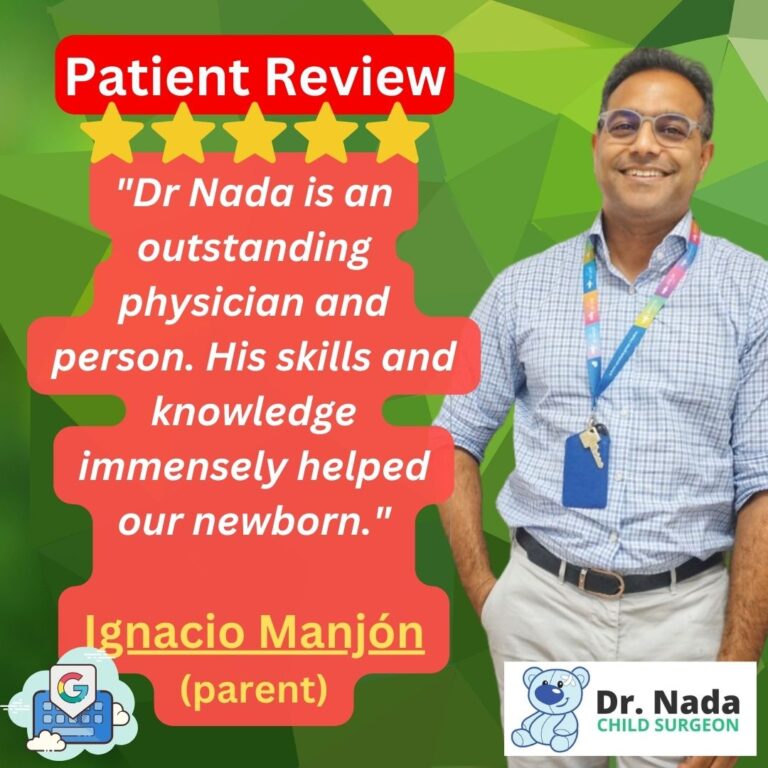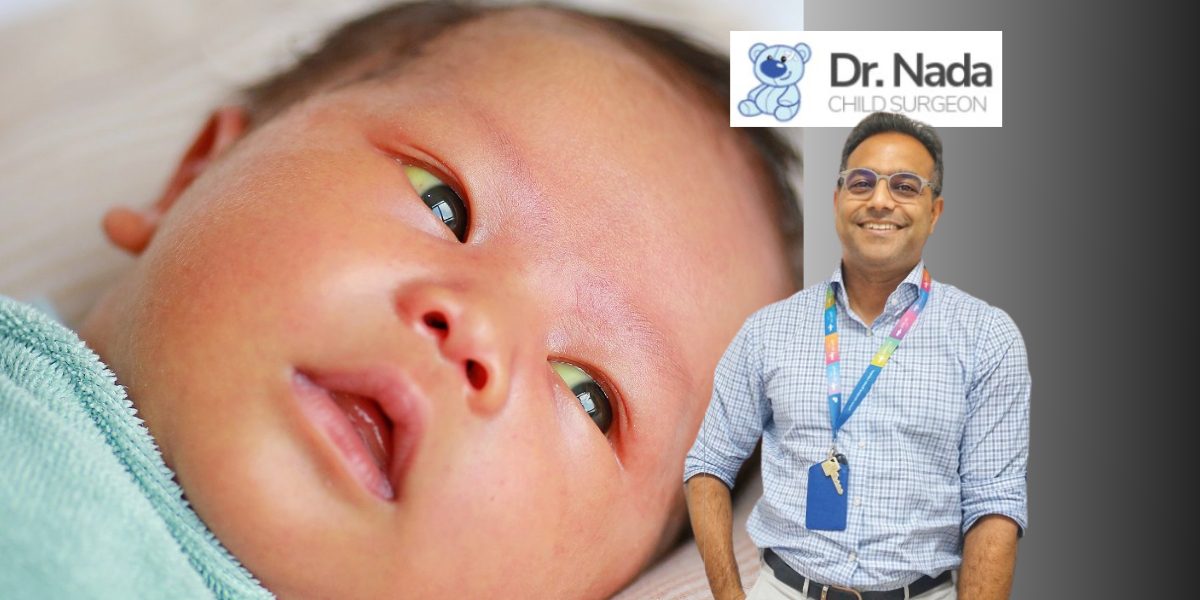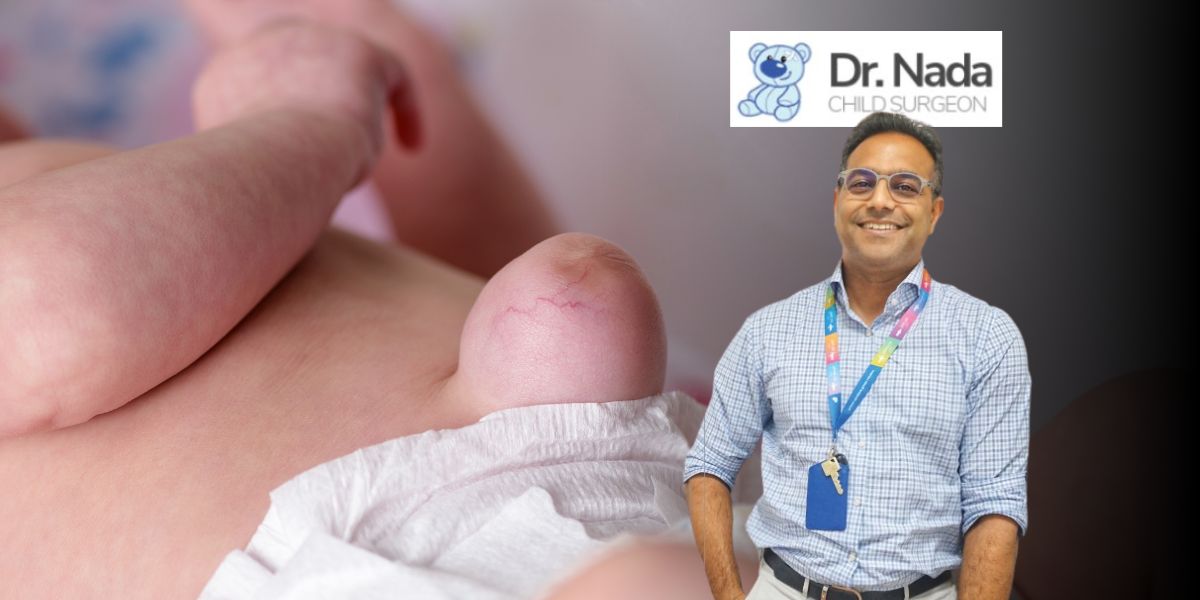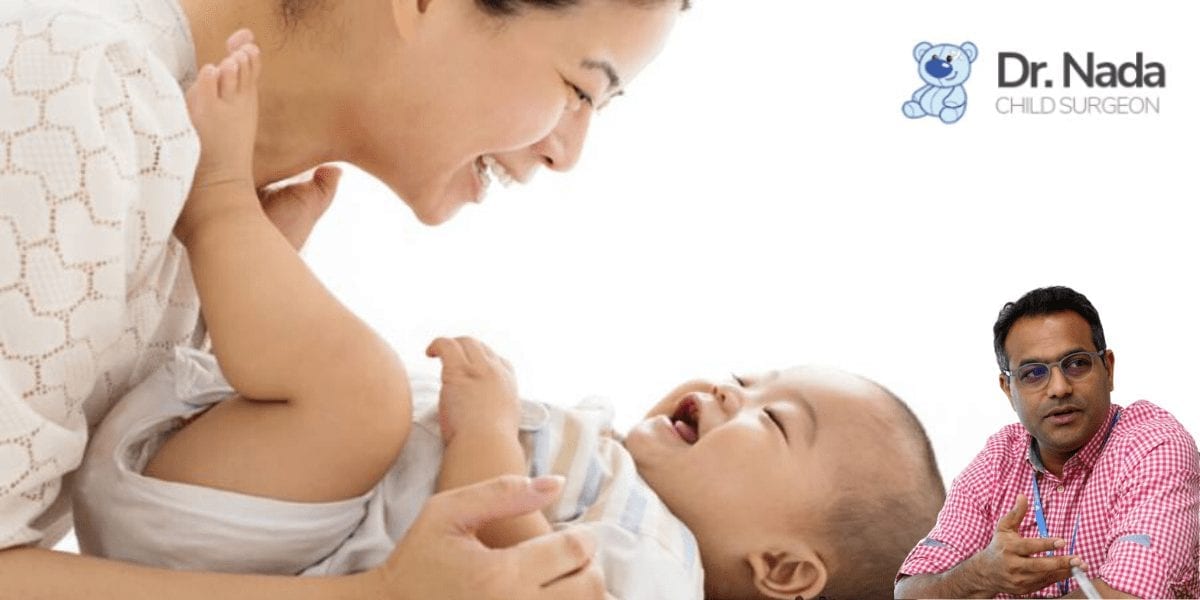What are Choledochal Cysts in children – causes, symptoms & treatment in Malaysia
What is a Choledochal Cyst?
Choledochal Cysts are an abnormality of the bile duct which delivers bile from the liver to the gall bladder and the duodenum (intestine).
The incidence of this abnormality is about 1 in every 10,000 children in Malaysia, whilst the incidence is less common in the west (1 in every 100,000).
The anatomy of the normal bile duct is shown below:

Choledochal cysts are abnormalities of the extrahepatic bile ducts whereby instead of being a fine tube, they are cyst like (ballooned up) collections of bile in these ducts.
There are different forms of these abnormalities, shown in the diagram below:

- Type 1c and 1f are the commonest making up 80% of all choledochal malformations. Here the whole of the common bile duct is an enlarged cyst. (C – the shape is cystic (soccer ball) and F – the shape is fusiform, (rugby ball)
- Type 2 is a pouch to the side of the common bile duct.
- Type 3 is where the cyst is right at the end before it opens into the duodenum.
- Type 4 are multiple cysts on the common bile duct and ducts inside the liver
- Type 5 are multiple cysts in the liver only
What causes Choledochal Cysts?
Choledochal cysts are rarely hereditary and most happen by chance.
There are 2 theories on the formation of choledochal cysts.
The first theory is a congenitally (happen before birth) narrowed end of the CBD joining the pancreatic duct. Due to this obstruction, there is bile build up and this pressure causes the CBD to balloon up.
The second theory is that the “common channel” (union of the pancreatic and common bile ducts) is long (see diagram below- type 3) and this allows the pancreatic juice (digestive enzymes) to enter the common bile duct and start digesting the CBD making is lax and balloon up.

How common are Choledochal Cysts in Malaysia?
The incidence of this abnormality is about 1 in every 10,000 children in Malaysia, whilst the incidence is less common in the west (1 in every 100,000).
It is also 4 times more common in girls compared to boys.
What are the symptoms of Choledochal Cysts?
Symptoms can happen any time after birth but generally are more common beyond the first 6 months of life. They include:
- Abdominal lump in the right upper tummy
- Pain in the upper right side of tummy
- Jaundice
- Fever
- Pale stools
- Nausea and vomiting
What are the risks associated with Choledochal Cysts?
There is obstruction to the bile flow with build-up of bile in the cyst, liver and the blood. This can cause tummy pain, jaundice and due to the stagnant bile, there could be infection of the bile fluid, causing fever.
With the stagnant bile fluid, there is also risk of bile stones forming in the cyst which can pass down into the common channel and cause obstruction to the pancreatic duct and hence pancreatitis, which can be life threatening.
With chronic obstruction and infection, it can lead on to liver failure or cirrhosis. In the long term, there is a high malignancy risk of the bile abnormal duct if left untreated.
How are Choledochal Cysts detected & investigated?
Choledochal cysts are nowadays mostly picked up antenatally (before birth).
During the pregnancy, some of these cysts are already apparent before the child is born. An ultrasound scan is done once baby is born to confirm the diagnosis and perhaps then a CT scan prior to planned surgery.
Some other children may present with symptoms listed above and an ultrasound scan or CT scan would normally be diagnostic. Blood tests are done to check if there are any signs of obstruction, jaundice with high bilirubin in addition to assess the condition of the liver and its functions.

What is the treatment for Choledochal Cysts?
For the vast majority of children with Choledochal Cysts, they may have intermittent self-resolving pain, or abdominal lump. Rarely they may present with acute symptoms like fever (infection of cyst), obstruction or even pancreatitis. These acute situations have to be managed first before considering surgery.
Ultimately, the best solution for choledochal cyst is surgery to remove the abnormal common bile duct and reconnect the bile flow from the liver to the intestine.
This is to avoid any of the above mentioned complications, which risks are pretty high and also the high risk of malignant transformation in future (cancer).
The surgery will involve removing all of the extrahepatic bile duct and the gall bladder bar a small portion at the liver end to attach the intestine to.
The procedure I perform is the Hepatico-jejunostomy (small bowel to the portion of bile duct at the liver end) as shown in the diagram below:

This surgery is a complex reconstructive procedure and takes anything from 3 to 6 hours to perform. If there was previous infection, it may take more time to perform due to scarring.
My choice for almost all surgery in children is the use of minimally invasive surgery ( “keyhole” or laparoscopic in the abdomen or thoracoscopic in the chest) with this, children experience less pain and recovers much faster after surgery compared with traditional open surgery with big incisions.
With the keyhole method, after undergoing surgery for choledochal cyst, children can go home anything from 2 to 5 days after the operation with minimal pain and back to normal activities soon after.

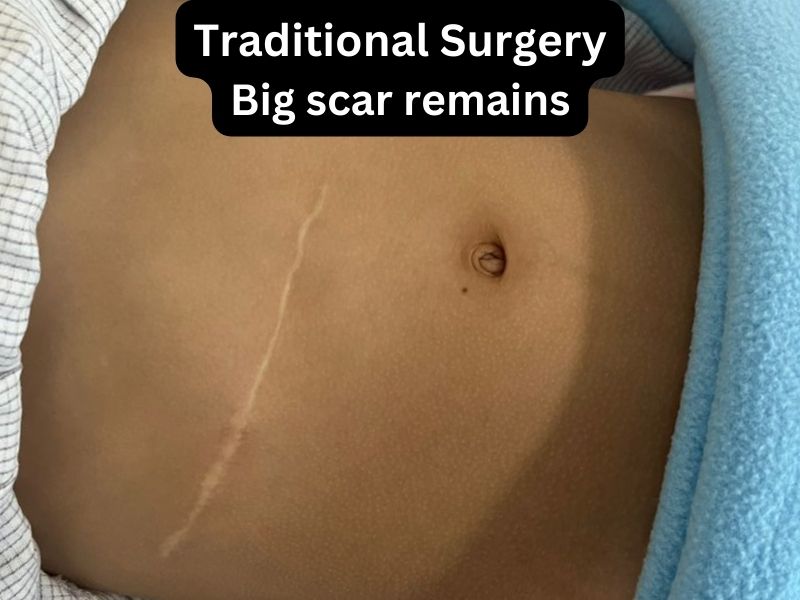
For more information on Keyhole Surgery take a look at the below article…

Patient testimonial after receiving Choledochal Cyst treatment from Dr. Nada
“First of all, I really thank the lord for blessed me and my family for get to know with Dr. Nada.
In my case, My baby girl diagnosed chronic Choledocal cyst. After surveyed few hospitals finally I and my husband heard lot of good reviews about Rr Nada and we decided to see him. From the 1st visit we have a high confidence on his service and as advised by Dr the keyhole surgery been done for my daughter in January 2020 . The surgery was really complicated and took almost 7 hours…Dr Nada is really experience doctor in Pantai Medical Centre.

He is the master of Keyhole (laparoscopic) surgery and only few doctors in Malaysia who have such skills. One of the benefits from keyhole surgery is its reduces injury to the body,because the cuts made are smaller and also much smaller scars. My girl tummy area looks like she never had a surgery before.
My daughter is absolutely fine after the surgery. Dr Nada was taking care my daughter in hospital with full of Love and Care which made my family praised him. Even though it’s has been already few months but Dr Nada still keep in touch on my baby girl’s progress.
Dr.Nada is a such a humble and wonderful person who really understand the needs of the parents who have problems with their kids.
For my family, he is the divine! We will be forever grateful for him May God bless you always…Dr…thank you.”
Chandakala Ck – Mother



